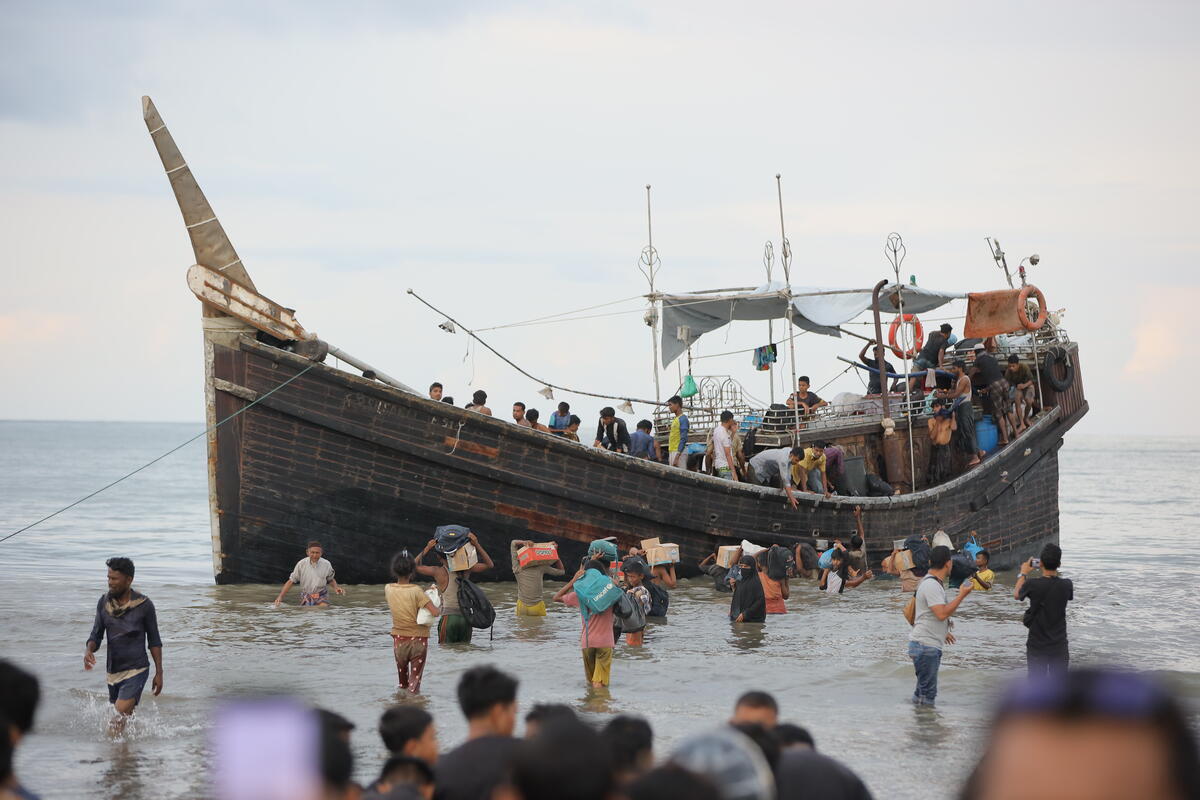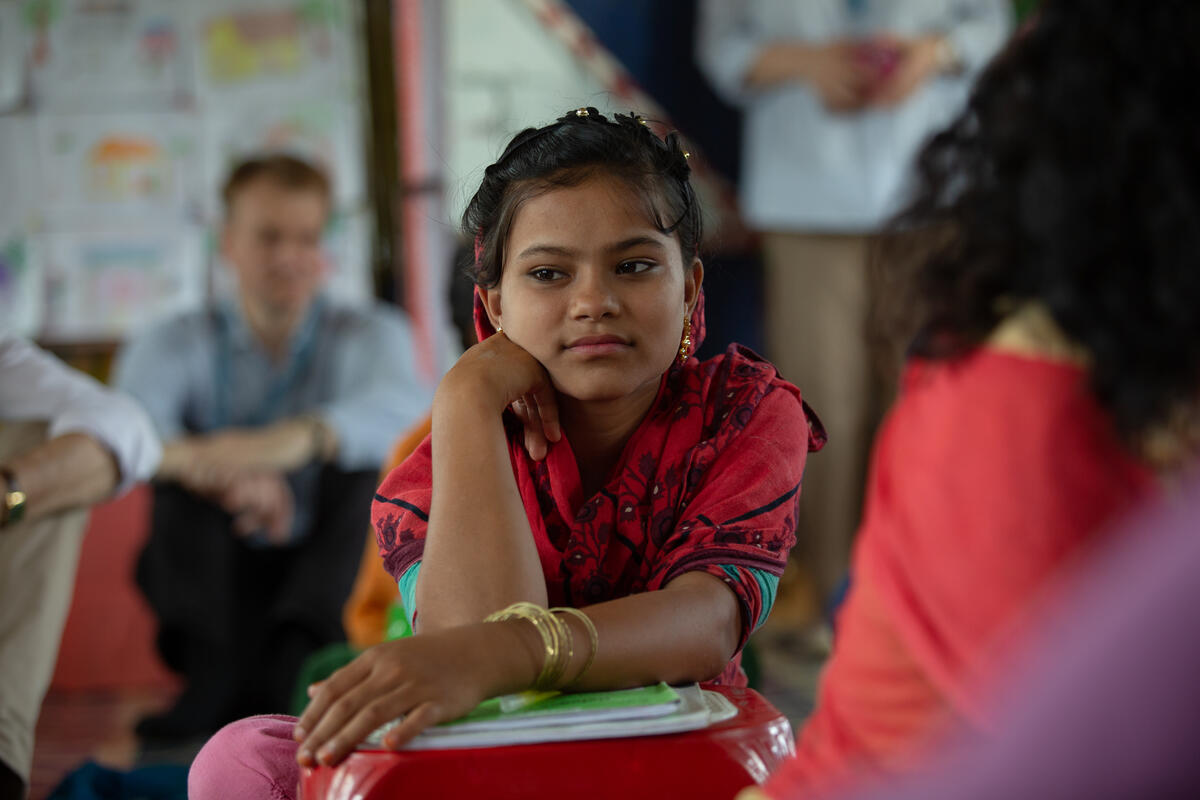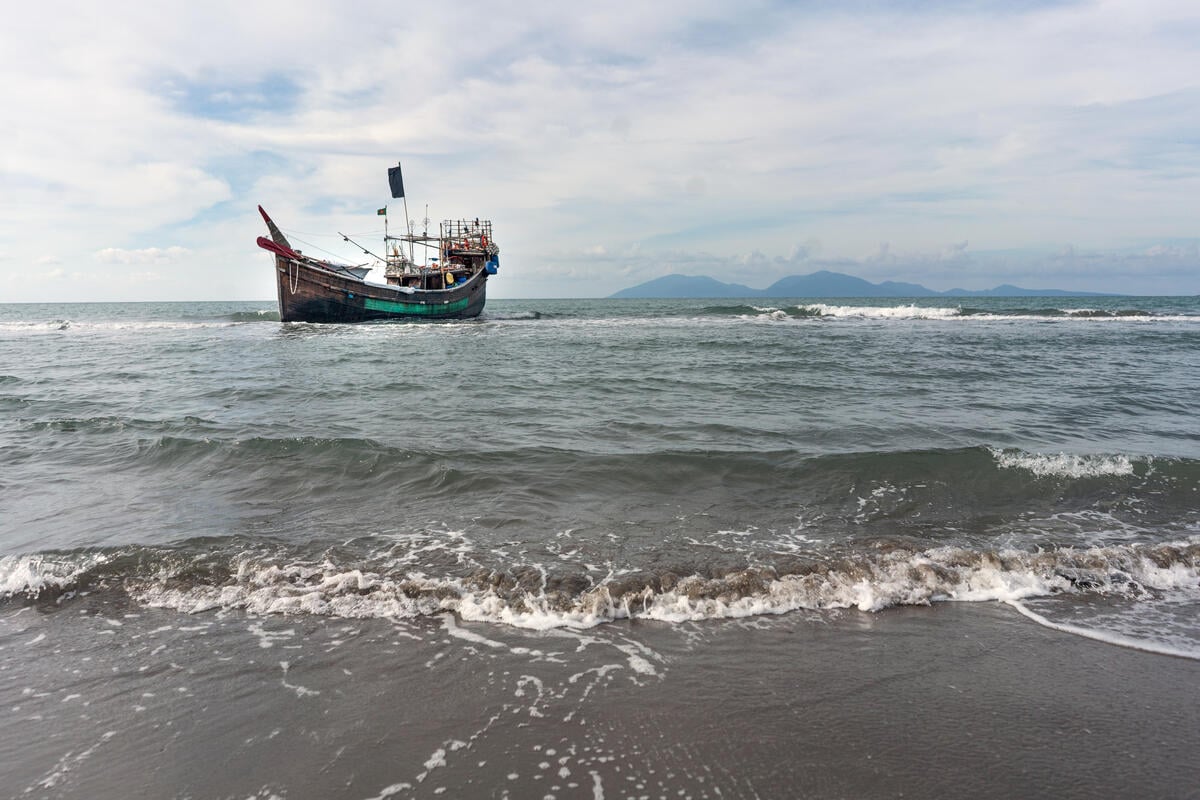Borders with Myanmar remain calm; no influx of refugees
Borders with Myanmar remain calm; no influx of refugees

BANGKOK, Thailand, October 1 (UNHCR) - After a month of protests within Myanmar, the country's borders with Thailand and Bangladesh were still quiet on Monday, with no signs of people fleeing to seek refuge abroad.
UN refugee agency staff on Monday visited the Friendship Bridge, a major border crossing at Mae Sot in northern Thailand, open to both pedestrian and vehicular traffic. "There does not seem to be any increase in the number of people arriving from Myanmar," said Alexander Novikau, head of UNHCR's office in Mae Sot. "We have not seen anything out of the ordinary."
Things were also quiet on the opposite side of Myanmar, on its border with Bangladesh. "Everything seems calm today," reported UNHCR Representative in Bangladesh Pia Prytz Phiri from Cox's Bazar, where the agency runs two camps for 27,000 Muslim Rohingya refugees from Myanmar's northern Rakhine state.
A government crackdown on protests in the past week has focused attention on Myanmar, South-east Asia's biggest producer of refugees. At least 200,000 people are refugees in neighbouring countries, many of them in exile for two decades.
"The nine refugee camps in Thailand along the Thai-Myanmar border are full," said UNHCR Regional Representative Hasim Utkan in Bangkok. "Because of the overcrowded conditions, any new influx of refugees could put pressure on the fragile existing infrastructure in the camps."
The 141,000 Myanmar refugees in camps run by the Thai Ministry of Interior live in cramped bamboo shelters, dependent on UNHCR and non-governmental organizations for protection, food, schooling and health care. The Thai government does not allow them to venture out of the camps for work or higher education.
Most of them come from the Karen and Karenni ethnic groups, which have been fighting the government in Myanmar almost since independence from Britain in 1948. With little hope that they will get to go home soon, many have chosen to start their lives over again in third countries.
Since 2005, more than 21,000 refugees have been accepted for resettlement in third countries, and more than 16,000 have actually left Thai refugee camps. The United States has accepted the largest number, 13,565, with Canada taking 2,743 and Australia, 2,491. Eight other countries have accepted smaller numbers.
"We are very grateful to these 11 resettlement countries," said Utkan. "Since there is no reasonable prospect these ethnic minorities can go back to Myanmar, at least they get a chance to build a new life elsewhere, particularly with brighter prospects for their children's futures."
The Thai government has made public statements that it would shelter and feed any new refugees from Myanmar. "We have talked to the Thai government to make sure it will accept people fleeing fighting or political persecution in Myanmar," said Utkan. "We trust that traditional and long-standing Thai hospitality towards refugees will continue."
The Rohingya refugees who remain in Bangladesh are the last from a mass movement of refugees in the early 1990s, most of whom went home again not long after they crossed into Bangladesh. In addition to the 27,000 in two camps, there are believed to be some 200,000 other Rohingyas who are not officially registered refugees, living informally among the local people.
"We are very pleased that in the last year we have made great strides in improving services in the two camps, Nayapara and Kutupalong," said UNHCR's Phiri. "New shelters are being constructed for everyone, another grade has been added to the informal education system, and the national school curriculum is being introduced. We have also been able to provide literacy training for adults and improved medical care."
Meanwhile, inside Myanmar, UNHCR staff continued their work monitoring the welfare of returnees in northern Rakhine state and in south-eastern Myanmar.








